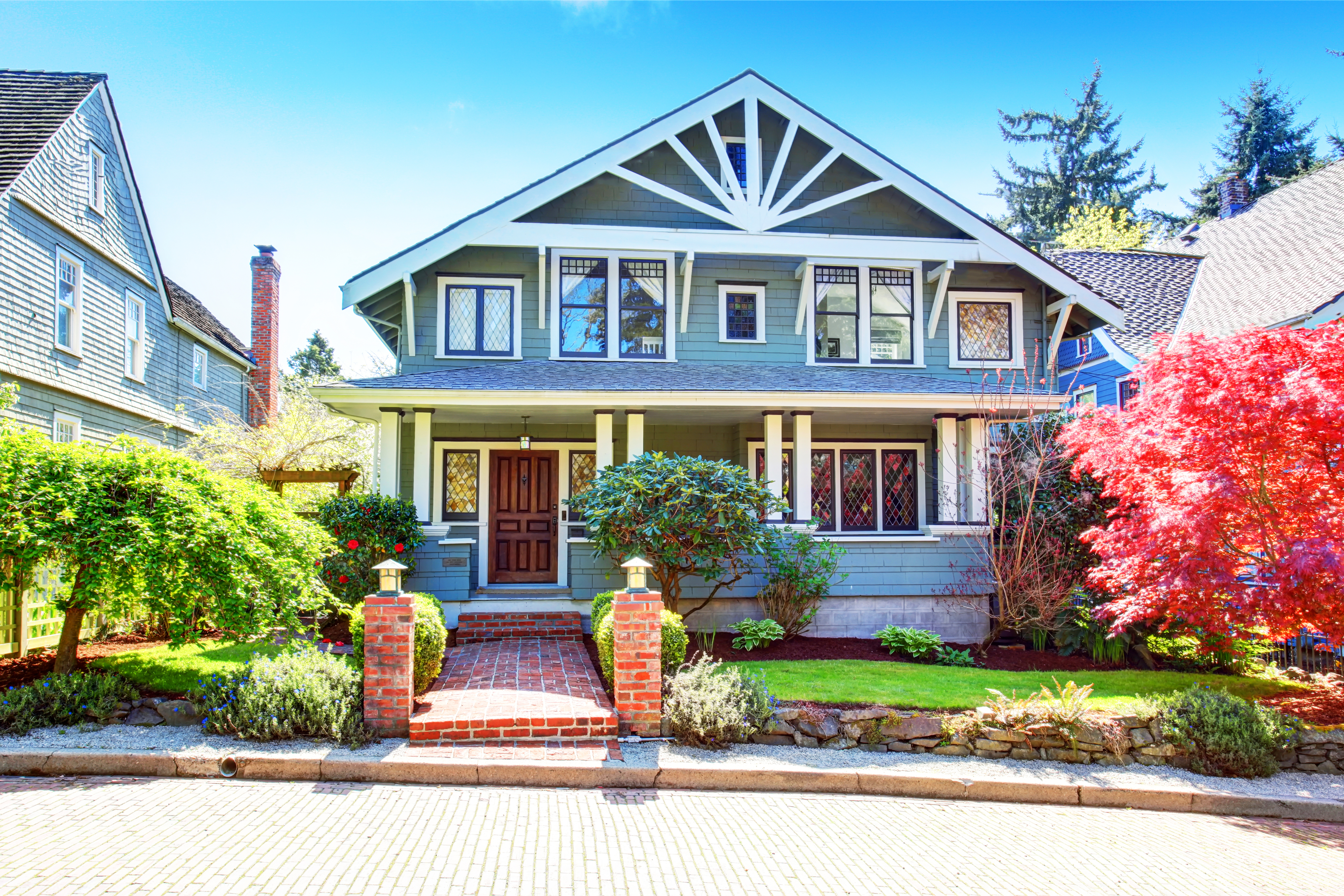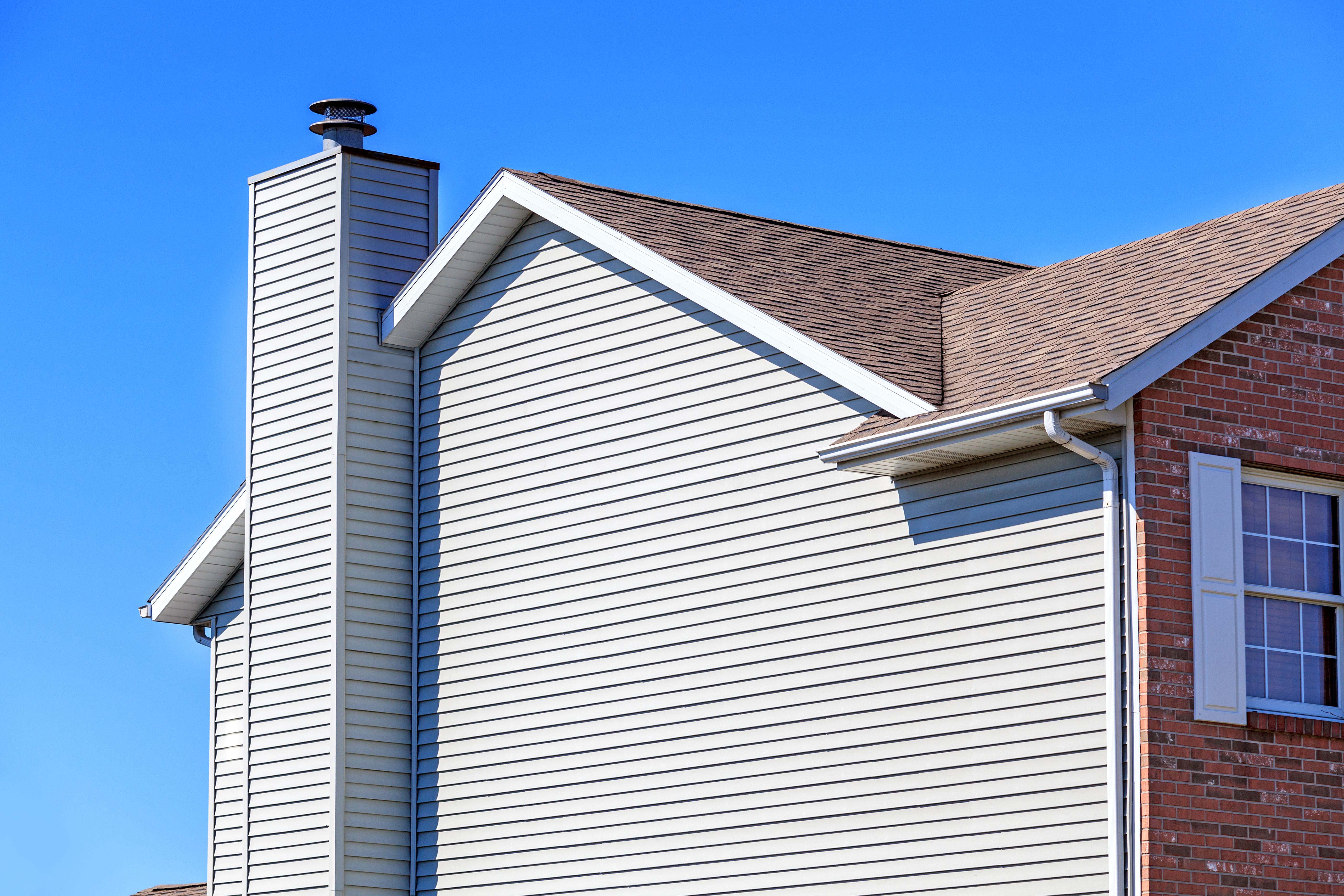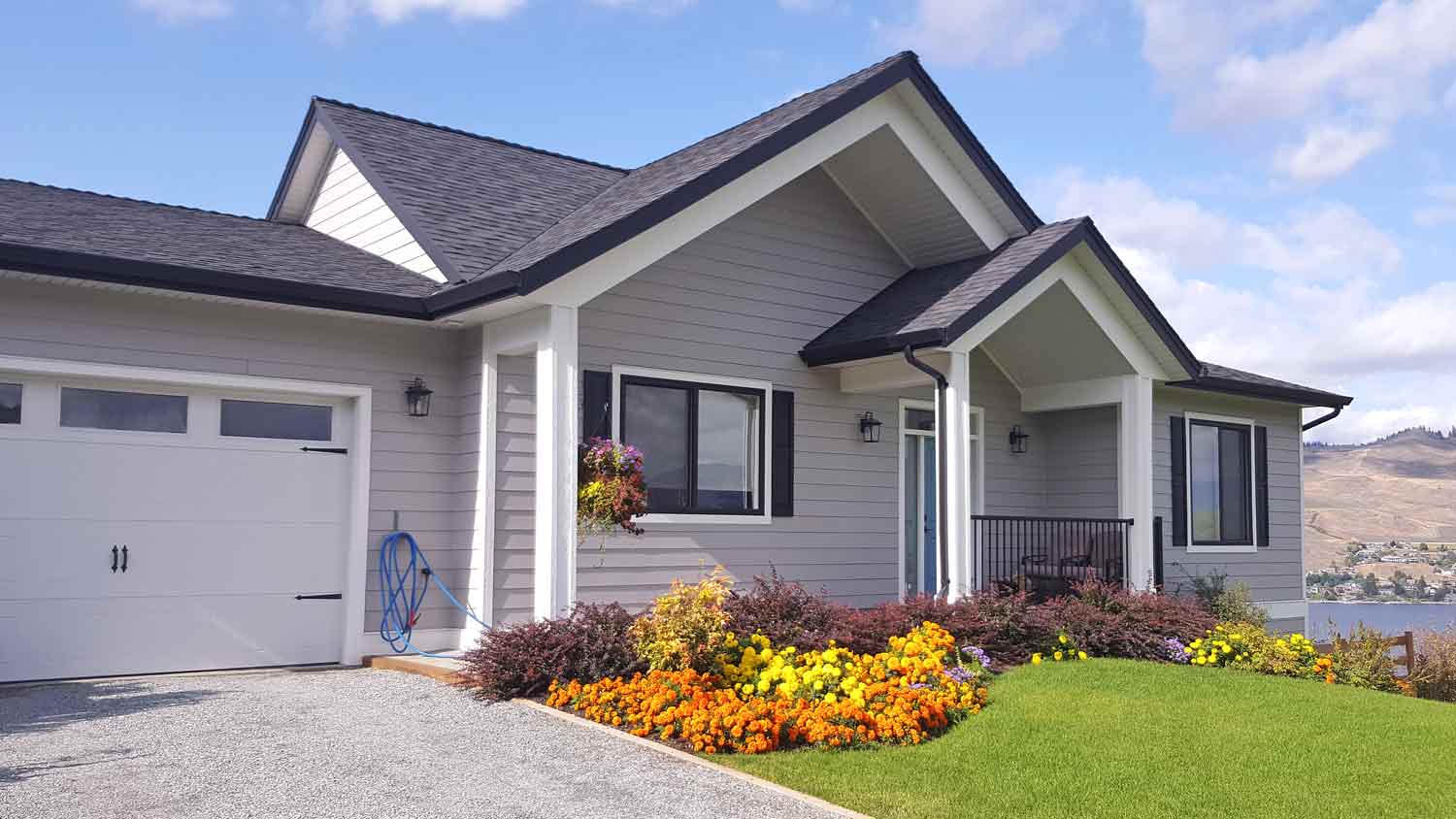
The cost of siding repair varies depending on material, design, and damage. This helpful guide covers the siding repair costs to expect in Columbus, Ohio.
Installing aluminum siding on your own is doable if you have the tools and a little patience


Half a century ago, you could drive through most neighborhoods and run out of fingers counting all the homes with aluminum siding. It’s since become less popular with the introduction of vinyl siding. Despite its tendency for chipped paint and to dent easily, aluminum siding still offers a number of benefits—it is long-lasting, won’t rust, and comes in a wide variety of colors. And, if you’re a particularly skilled DIYer, it’s possible to install without calling up your local metal siding contractor. Below, we’ll walk you through how to install aluminum siding by yourself.
Just keep in mind: The project will take several days if you’re re-siding your entire house in aluminum. Before removing your existing aluminum siding, purchasing replacement siding, and dedicating a week or two to installing new siding, consider whether your current aluminum siding actually needs to be replaced or if repairing aluminum siding yourself might get a few more years out of it.
Before you can install aluminum siding, you’ll need to remove the existing siding. Here’s how to remove aluminum siding, but note that the steps will differ if you’re removing another type of metal siding already in place.
You’ll also want to remove gutters, downspouts, vents, water fixtures, and anything else that might get in the way during the installation. You’ll need to reinstall these after the project is completed; if you’re not sure how, you can find a gutter installation company near you to reinstall the gutter system.
Finally, examine the exterior walls after removing the siding and scrape off any old paint or caulk. Hammer in or remove stray nails.
Note: Wear protective eye goggles, gloves, and ear plugs as needed, especially when making cuts with a circular saw.
Start by nailing waterproof sheathing over the entire exterior wall, if necessary, cutting around doors, windows, and other openings. Then, install a ⅜-inch foam board underlayment, which ensures a smooth surface to which to install your aluminum siding. Use nails to affix each foam board piece perfectly straight, with no gaps in between.
Start your install by hanging corner posts on all wall corners (outside and inside corners). Hammer nails in the top of each of the uppermost slots (one on each side), leaving ¼ of an inch of a gap between the top of the corner post and the soffit. Leave a small (1/32 of an inch—about the thickness of a dime) gap between the head of the nail and the actual corner post trim to allow for expansion and contraction.
Continue nailing down the post, with nails in the center of each slot rather than the top. The bottom of the corner post should overhang the bottom of the aluminum portion of the wall (where you’ll install the starter strip) by ¾ of an inch.
You may need more than one corner post for particularly tall walls. If so, overlap the two corner posts by 1 inch when you stack them
Next, you’ll need to install footer trim (called the starter strip) at the bottom of each of the exterior walls. Snap a chalk line along the wall to follow for your installation, and use a level to make sure it’s straight across.
Hammer the nails into the center of the slots, not the top, which will allow for movement as needed. Again, leave a 1/32-inch gap between the nail head and the footer trim to allow for expansion and contraction.
Under the eaves, install F-channel trim across the wall. When installing the actual aluminum siding panels, you’ll slide the top sheet under this trim. Follow the same guidelines about nailing: center of slots and a minute gap between the nail head and the trim.
Install self-adhesive flashing around windows and doors. Further protect these openings by sealing any gaps with caulk.
After your openings are sealed and the caulk has dried, install J-channel around windows and doors. Measure the perimeter of the openings and cut the J-channel to size using tin snips. Each channel should be 2 inches longer than the opening dimension.
For the bottom channel, cut 1 inch out from the ends before installing. For the side (vertical) channels, cut rain tabs. At the top, notch out 1 inch on each side and cut rain tabs on each end. Install these so that water will run down the channels and away from the house—not into it.
Nail at 12-inch increments when hanging this trim. Again, leave a small gap so the trim hangs from the nails rather than be completely fixed to the wall.
You’ll start at the bottom of the wall and work your way up. Slide the aluminum siding panel into the starter strip installed in step 3. It’s designed so that the first row will interlock into the starter strip. Slide the panel nearly all the way to the corner trim (leave about ¼ inch of a gap for expansion), and lock it into place. If needed, add additional siding panels to the first row, overlapping by 1 inch. Use your circular saw to cut siding panels to size as needed.
Continue installing the aluminum siding up the wall. Each panel is designed to lock into the panel beneath it.
Use a circular saw to cut pieces around openings (windows, doors, air vents, etc.) as needed.
You may need to cut the top piece of aluminum horizontally so it fits into the F-channel installed at the top of the wall. Fasten the top row into the row below it, then slide the top of the panel into the F-channel.
Knowing how to install aluminum siding is the first step to a DIY install—but knowledge is only half the battle. You’ll need all the proper tools, confidence on a ladder, an understanding of exterior siding (and how to prevent water damage), and plenty of time for the project. If you’re willing and able, handling the project yourself dramatically reduces the cost to install aluminum siding.
To speed up the time-consuming project, consider asking some friends or family to help. Alternatively, get quotes from siding contractors near you—and hire the best professional to tackle the job. It’ll cost more, but you won’t have to lift a finger (beyond dialing up the contractor).
From average costs to expert advice, get all the answers you need to get your job done.

The cost of siding repair varies depending on material, design, and damage. This helpful guide covers the siding repair costs to expect in Columbus, Ohio.

In addition to protecting against extreme Midwest temperatures, new siding in Columbus adds curb appeal. Learn about siding replacement cost in Columbus.

New vinyl siding adds value and curb appeal to homes in Columbus, Ohio. Learn about average vinyl siding installation costs in Columbus, Ohio.

Lap siding is a common siding style available in various materials. Learn what lap siding is, its pros and cons, and how much it costs.

By evaluating the pros and cons of fiber cement siding, homeowners can make informed decisions about enhancing their homes' exteriors.

Frieze board can transform a home by adding depth and style. Keep reading to learn what frieze board is and how to use it to enhance your home’s appearance.